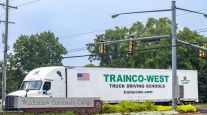Senior Reporter
FMCSA Panel Divided Over Certification Issue
ALEXANDRIA, Va. — Though more than halfway through its scheduled meetings to standardize training regulations for entry-level truck drivers, a Federal Motor Carrier Safety Administration advisory panel remained divided on whether driver training schools should self-certify their programs or be certified by a third party.
The 26-member stakeholder committee is racing to meet a May 29 deadline to reach a consensus on what should be in a proposed rule setting training standards for people who are about to test for a commercial driver license. The federal government has been trying to develop such a rule since 1985.
The most recent pair of two-day meetings on April 23-24 was the fourth of six. The next is set for May 14-15.
VIDEO: LiveOnWeb tackles driver training
While facilitator Richard Parker said last week the group has “cleared” most of the general issues related to core curriculum, it must decide how to certify training schools.
The committee is still weighing the pros and cons of the potential cost of using an independent third party to certify programs versus allowing a self-certification process that would require a training entity to fill out a rigorous registration form similar to a carrier seeking operating authority – and then be subject to an audit.
The group also is still wrangling with the issue of obtaining data that could link new driver training to safety outcomes that would withstand the rulemaking scrutiny of the White House Office of Management and Budget.
FMCSA economist Robert Armstrong said Con-way is among the first carriers to come forward offering to help with some of its safety data.
The company’s data consists of both a control group of 1,200 relatively new drivers who have completed a curriculum of company training as well as a group of 1,200 drivers who have worked for the carrier for a longer period of time but have not received the same new-driver training.
“It’s very encouraging that they have data,” Armstrong said.
But he said shoring up such data sets can be challenging since some drivers may use trucks with safety technologies or travel less congested routes, while others use older trucks and travel in heavy traffic.
Armstrong said some of Con-way’s initial findings were counterintuitive to the notion that new drivers have the worst safety performance.
They didn’t.
“So if we can do this statistically correct, we have to show that the safety performance of these inexperienced, new drivers would be even worse if it weren’t for the training,” Armstrong said.




